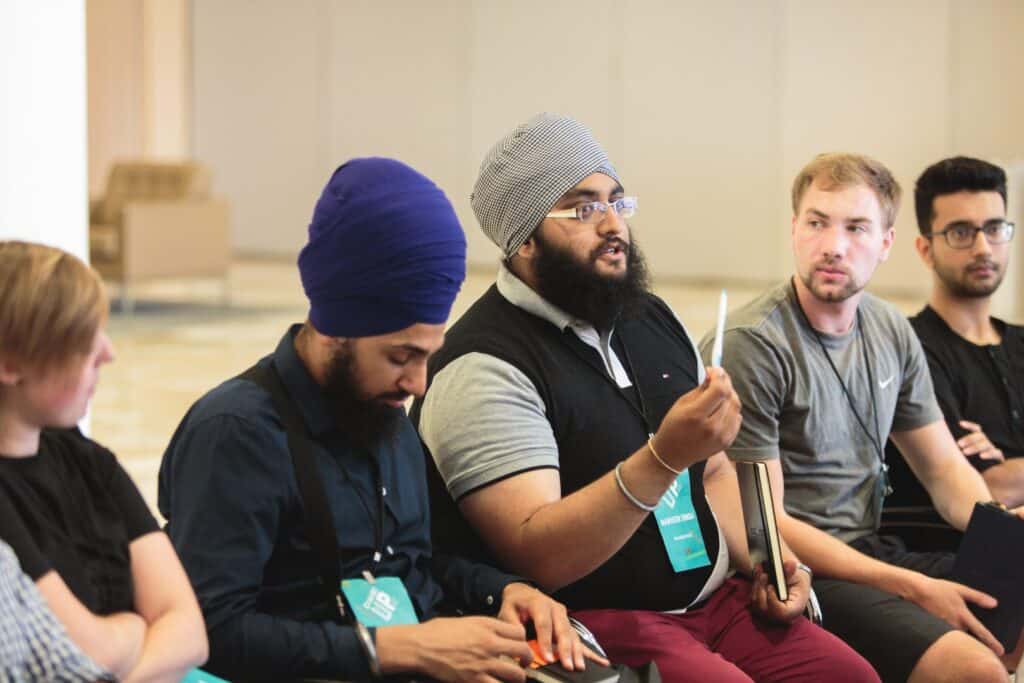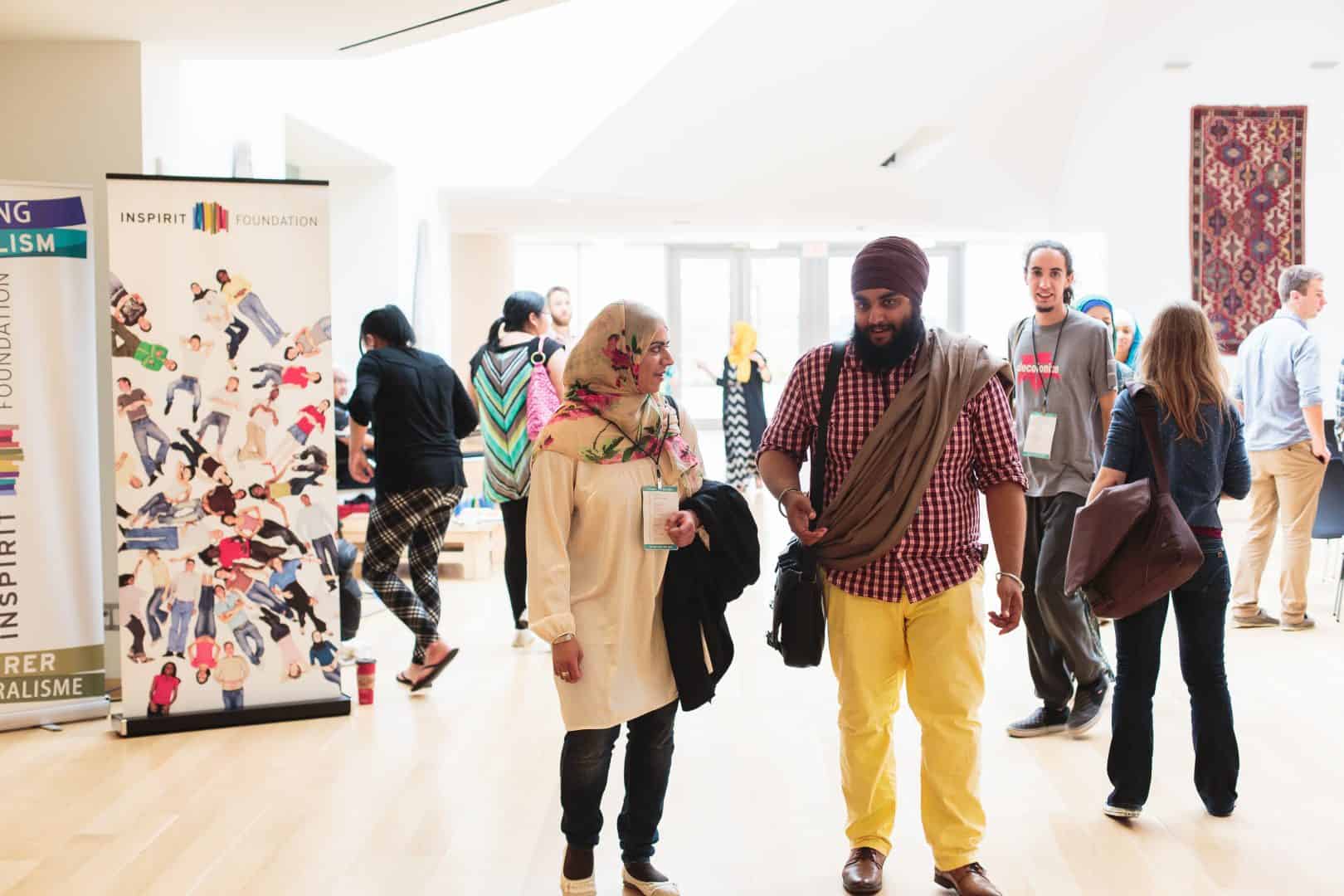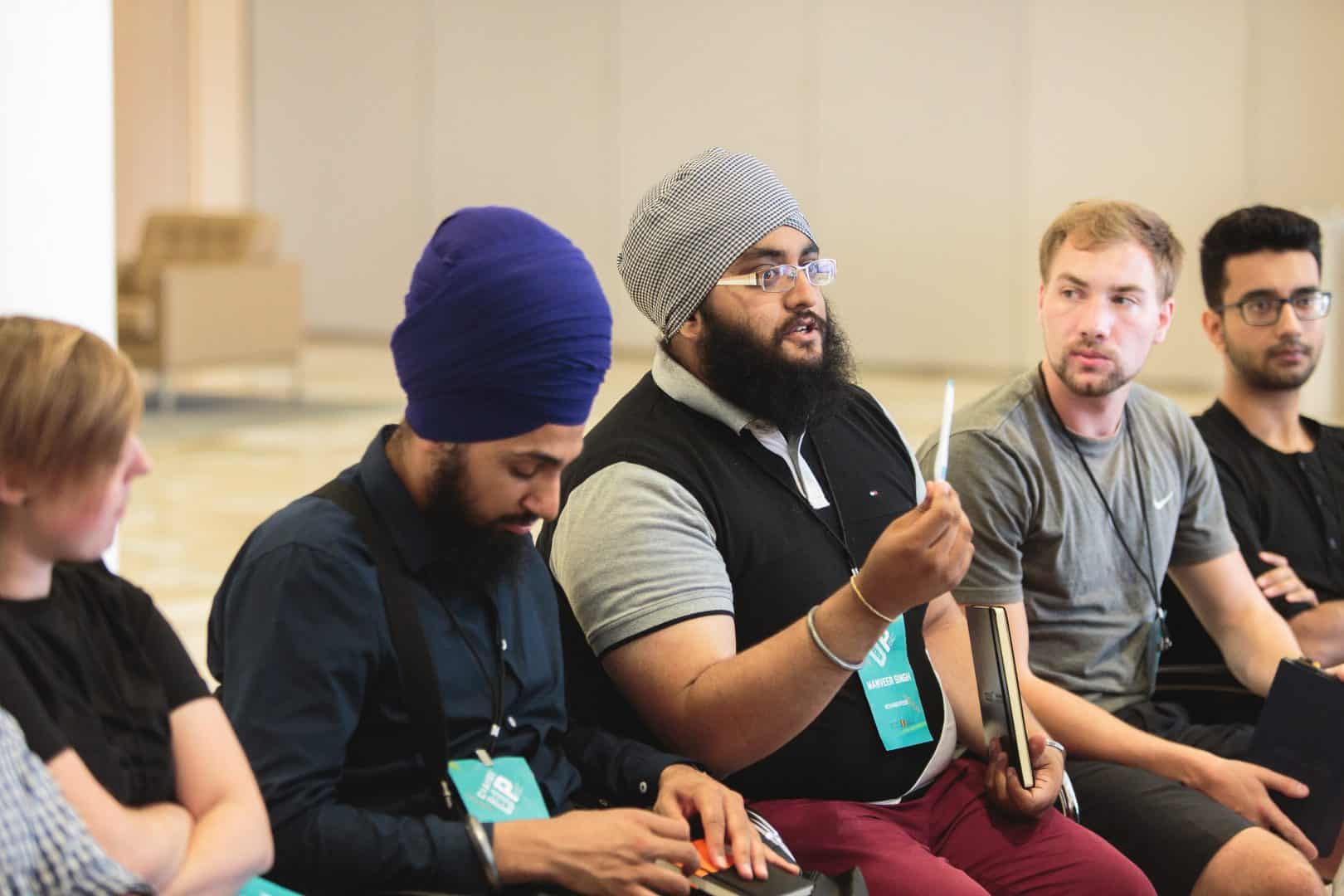
Vaisakhi: The coming of Spring and lessons in faith-inspired social justice values
Guest post by Sanjeev Timana, Research + Evaluations Coordinator
On April 14th, Sikhs around the world will be celebrating Vaisakhi, marking the historic formation of the Khalsa and the solidification of the Sikh community in 1699. The Khalsa is the special order of baptized Sikhs who choose to devote themselves to the faith and mark this by adhering to a specific code of conduct (this includes rules that dictate the distinct appearance of baptized Sikhs, who are often recognized by their long hair and turbans). Although every year since has been a celebration of that particular occasion in 1699, the day had significance well before then as a harvest festival across Punjab. For many farmers and agricultural workers across the region, Vaisakhi was a celebratory day of rest before the work of the Spring harvest began in earnest. In light of this, it’s interesting to note how closely the events of Vaisakhi 1699 echoed the natural phenomena of Spring; the reemergence or rebirth of living things that lay dormant in Winter.

By the end of the 17th Century, the Sikh community had been in existence in various forms for at least 180 years, going through phases of establishment, reinforcement, expansion and consolidation. During that time, the burgeoning community was both trying to expand upon ideas originally developed by the founder, Guru Nanak Dev Ji, while growing the community as a whole. But with growth came challenges and external threats from Mughal colonialism as well as rival kingdoms vying for position. The Punjab of the 16th Century was beset on all sides by division, imperialism, and a rigid social hierarchy. Many poor and landless people toiled endlessly to survive while being oppressed and systematically dehumanized by people of higher castes. Meanwhile, foreign imperial powers wrestled for control over the northwestern part of the subcontinent with local kings and warlords, whose relationship to most of their subjects was, at best, distant and at worst, oppressive. Stuck in between these kings, sultans, princes, and emperors, were ordinary people doing their best to live their lives according to the traditions they inherited—traditions that often forced vulnerable people into difficult situations.
In response to these oppressive systems, the Sikh community asked its followers to choose a new path. Guided by the Gurus who drew the seeds of their teachings from a wide range of spiritual philosophy from across central and southern Asia, the Sikhs built new settlements, established revolutionary new practices —like the adoption and expansion of langar, or free community kitchens—and worked to build an inclusive future. They defied the rigid caste system by accepting people from all walks of life into the new community, with the aim of reducing the barriers between the poor and the wealthy. The Sikhs also upended many of the gender norms of the time, building on Guru Nanak’s conviction that women had equal access to and capacity for divine liberation as men.
By the time 1699 rolled around, the community was being lead by the tenth and final human Guru, Guru Gobind Singh Ji. Though the community had still managed to survive and thrive, by this point they had suffered several decades of persecution and violence from imperial authorities, smallpox outbreaks, and internal schisms. Two of the Gurus of the past century had been tortured and killed by imperial authorities, and several wars had been waged by the Sikhs, both to protect their own communities, and to defend some of their allied neighbours.

All of this history led to that fateful day in 1699 where, once again, the Sikhs were asked to choose a new path by their leader. After being appointed the tenth Guru following the imprisonment, torture, and execution of his father Guru Tegh Bahadur, Guru Gobind Singh Ji called a great gathering in Anandpur in defiance of imperial authorities who had banned such gatherings. At this gathering, the Guru made bold proclamations about the past and future of the Sikhs, and asked five people among the crowd to pledge their lives for the faith. As the five stepped forward—each of them from a different region, ethnic group and social standing—the Guru took them into a covered tent hidden from the crowd. After a tense wait, the Guru emerged from the tent with a bloody sword, having apparently beheaded the five men as a pledge of their faith. However, it later came to light that all was not as it seemed; the Guru’s sword was covered in goats’ blood and the beheadings were a test of the crowd, to see whether any people would step forward willing to die on the spot for their faith. Moments later, the five emerged, each of them reborn as the first five members of the Khalsa—known as the Panj Pyare or the five beloved ones—the new formalised Sikh community.
After this emergence, the Guru built the Khalsa into an army to fight off imperialism and protect the freedoms of the Sikhs and their neighbours. In addition, he created new protocols and conventions for the community; there were to be no more living Gurus after him, with the collected written teachings of the Gurus to take his place instead as the final, ‘eternal’ Guru, and all Sikhs would cast off their old family names which tied them into the caste and religious structures that had held them down. The emergence of the Khalsa triggered an almost immediate hostile response from the empire and its vassals, but by this time the Sikhs were set on their path of resistance. They waged wars against their occupiers and oppressors to uphold their new principles; within a century, they had established their own vast territory and subsequently extended their protection to hundreds of thousands of people across the northwest of the Indian subcontinent.

I try to think about what it may have felt like to be in the crowd at Anandpur on that day for an average Sikh. I think about the fear of imperial reprisal that must have proliferated communities across the region; which village would be attacked next, which family members would be taken away, never to be seen again. I wonder about how these people saw their chances of survival, surrounded as they were by hostile and violent adversaries who seemed only to value conquest and supremacy over all others. How would those feelings change once they saw the immense crowd, and the Guru at the centre addressing them all with unshakeable conviction and certainty? What did they think, when five men stepped forward and the Guru appeared from the tent with his bloody sword; was it shock, or disbelief? And then, when the five emerged resplendent and proud, was the crowd inspired? Did they see a glimpse of something they could become? Did they see a future that they could be proud to help build?
I like to think that after two centuries of looking inward, of facing growing pains and developing new ideas, that maybe the Sikh community was finally ready to emerge, to step forward and announce to the world around them that they were ready to make their mark. Since 1699, the global Sikh community has worked hard to live up to the example set by the Gurus; Sikhs have set up international aid charities like KhalsaAid to work in disaster relief, provide critical community supports like Seva Food Bank, and advocating for human rights. I think there’s a lot that this story can teach us today, about enduring through dark and difficult times, and holding on long enough to find an opportunity to re-emerge. I like to think that there are lessons in this story for people across Canada fighting for social justice in the face of stiff opposition. As Vaisakhi 2018 rolls around, I’ll remember this story and I hope it can serve as inspiration for all of those people looking to build and more just and inclusive world.
Now that winter is finally over and Spring has arrived, let’s get to work!
————–
References:
Singh, Pashaura and Fenech, Louis E. (eds.) (2014) The Oxford Handbook of Sikh Studies. Oxford: The Oxford University Press
McLeod, W. H. (2009) The A to Z of Sikhism. Plymouth: The Scarecrow Press, Inc.